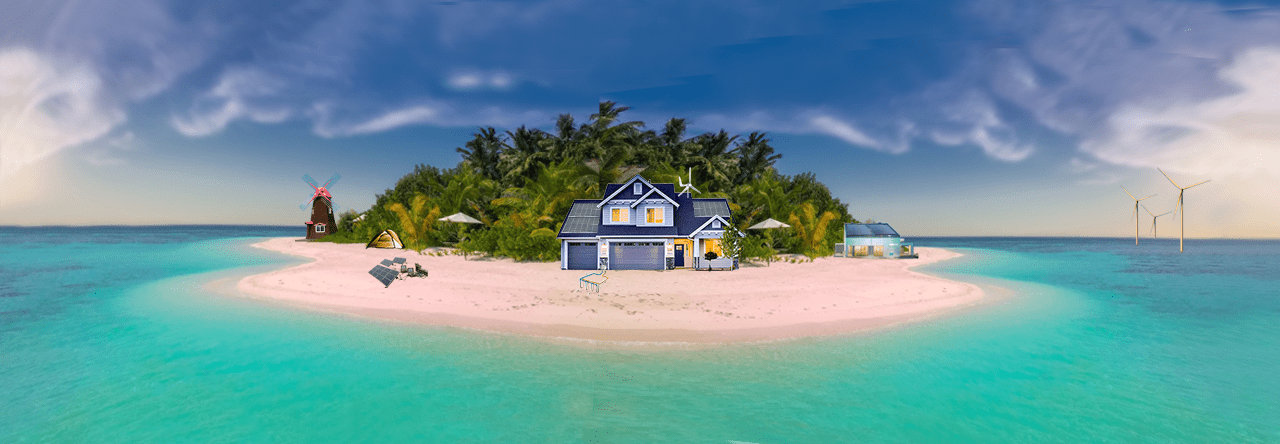Energy creates everything.
It’s why we’re here.
Electric Islands explores how we can gain energy independence and thrive in our rapidly changing world by generating clean electricity with renewable microgrids.
Evolving our energy use

We started turning wood into flames when we still lived in caves. Those flames gave us warmth, light, and cooking. Ever since, we’ve sought to control ever-larger energy transfers to make our lives easier. That thirst for power has led us to burn all the carbon we can get our hands on.
Over 100 years ago, we figured out how to generate electricity by burning coal, gas, and oil. Soon after, we built power plants to burn these fossil fuels and centralized electric grids to distribute the electricity to homes, facilities, and businesses.
This system improved the quality of life for billions of people. It fostered security, prosperity, comfort, innovation, wealth, and the ability to inhabit new places.
But today, this same system is causing significant problems. We’ve reached the limits of burning fossil fuels and centralized electric grids.
Much of the coal, oil, and gas left is prohibitively challenging and expensive to collect.
The burning of fossil fuels pollutes our air so much that it kills 8 million people a year from heart and lung disease.
And burning these fuels is rapidly changing our climate and weather to the extent that it threatens life as we know it. The ongoing intensification of floods, droughts, hurricanes, tornadoes, blizzards, wildfires, and temperatures is battering infrastructure. Making the grids’ poles and wires unreliable.
On top of that, centralized electric grids and expensive fossil fuels have prevented 1 in 7 of us from having electricity today.
It’s time to evolve how life is powered.
To adapt and thrive in this century, our electricity must come from clean local sources without compromising how much energy we can use.
The renewable microgrid era rises as the sun sets on the age of fossil fuels and centralized electric grids.
The era of renewable microgrids
We can produce enough solar, wind, geothermal, and hydro electricity to replace fossil fuels. In most cases, it’s cheaper than burning fossil fuels. At the same time, we’ve made considerable advancements in battery technologies over the past decade. So now we can store energy where the clean energy is collected from nature and used for electricity.
This combination of distributed clean electricity generation paired with on-site energy storage is a renewable microgrid, or as I call them, electric islands.
Individuals, organizations, businesses, and governments choose renewable microgrids because they offer sustainability, resiliency, savings, and independence.
On an electric island
Whether you like it or not, our fates have never been more intertwined.
We know it. We can feel it.
With each passing day, transportation, technology, communication, and the climate crisis are connecting us to one another faster. It can feel when that interconnectedness comes at the cost of our independence. In reaction to this fear, many of us are grasping at controlling whatever we can. It’s all around us in politics, health care, migration, and energy.
Many things are out of our control, but how our lives are powered no longer is. Renewable microgrids empower us with energy independence. We control how our electricity is generated, where it comes from, how it’s stored, and what it’s used for.
It’s time to reimagine how to thrive in a world where energy is evolving and becoming decentralized.
That’s why the Electric Islands blog shares how we use renewable microgrids to become more independent, wealthy, resilient, and proud of the world we’re creating.
